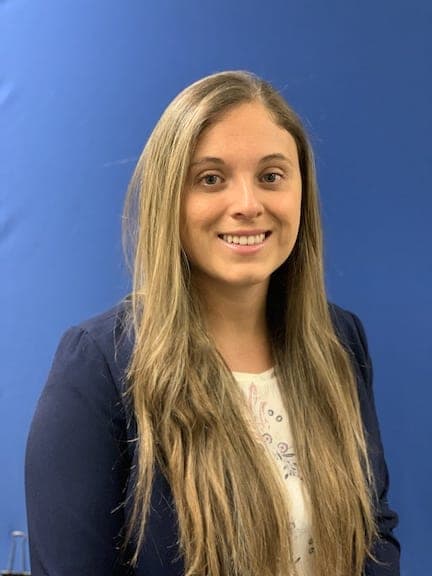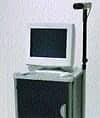Many patients who start on CPAP for sleep apnea note a decrease in their middle-of-the-night bathroom visits. But do patients who choose mandibular advancement devices get the same benefit?
Interview by Bushraa Khatib
When obstructive sleep apnea (OSA) patients are treated with oral appliance therapy at the University of Kentucky’s Pain Clinic, Fernanda Yanez-Regonesi, DDS, MS, an assistant professor at the College of Dentistry’s orofacial pain program, noticed many would comment during follow-ups that they were no longer waking up to go to the bathroom. This feedback inspired Yanez-Regonesi to investigate the impact oral appliances have on nocturia.
“We realized there was a lot of literature about the improvement in nocturia in patients with obstructive sleep apnea with the use of CPAP machine; however, there was no available literature for MAD [mandibular advance device] therapy,” she says. Her study found more than half (56.6%) of patients no longer presented with nocturia at their third follow-up appointment.
[Editor’s Note: Read the full abstract, Improvement in nocturia in obstructive sleep apnea patients with the use of mandibular advancement device, which was presented at the American Academy of Dental Sleep Medicine 2021 virtual annual meeting.]
Yanez-Regonesi discussed the study with Sleep Review over email. The transcript has been lightly edited for clarity and style.
Why is nocturia an issue for patients who have trouble with sleep?
FYR: Nocturia is associated with a disruption of sleep. Studies have demonstrated a relationship between the frequency of nocturnal voiding and the negative effect on quality of life and well-being. There was a study performed to understand how much nocturia is associated with bother and impact on the life of patients. They saw that, in both genders, nocturia was significantly associated with reduction in all dimensions of quality of life (moving, seeing, hearing, breathing, sleeping, speech, mental function, depression, sexual activity, among others), except for eating.1
How would you compare the effectiveness of treatment with CPAP versus treatment with MAD therapy on nocturia?
FYR: Studies with CPAP therapy have reported an improvement between 50% to 100%,2,3 while we saw an improvement of 60%.
Thoughts on how nocturia and OSA are related?
FYR: There are reports in the literature regarding a relationship between OSA and nocturia in adult patients, considering nocturia a predictor or indicator of risk for OSA.4,5 Studies have indicated that continued respiratory efforts during apneic events lead to a false signal in the heart that causes production of a hormone related to water balance (ANP) leading to urine production and nocturia.6 It is hypothesized that by managing OSA, nocturia improves.
Did you see any difference in results between the types of oral appliances?
FYR: No significant difference was noted between the appliance design or titration and response to therapy.
How long were patients studied?
FYR: The average follow-up for our study was 6±3.65 months. We are currently working on a new study to compare four different time points and have a better understanding of the immediate, short-, and long-term effects.
What are the clinical implications of your research?
FYR: Nocturia could be used as a subjective measurement of improvement during the titration process of MAD. Based on the results of our study, MAD therapy provides significant improvement on nocturia secondary to OSA, which provides another outcome to be comparable to CPAP therapy.
What further research should be done?
FYR: Future studies should address if there is a correlation between improvement in apnea-hypopnea index (AHI) and changes in nocturia.
The Study:
Yanez-Regonesi F, Sangalli L, Martinez-Porras A, et al. Improvement in nocturia in obstructive sleep apnea patients with the use of mandibular advancement device. Journal of Dental Sleep Medicine. 2021 Virtual Annual Meeting Abstracts: Abstract #13.
References
- Tikkinen KAO, Johnson TM 2nd, Tammela TLJ, et al. Nocturia frequency, bother, and quality of life: how often is too often? A population-based study in Finland. Eur Urol. 2010 Mar;57(3):488-96.
- Vrooman OPJ, van Balken MR, van Koeveringe GA. The effect of continuous positive airway pressure on nocturia in patients with obstructive sleep apnea syndrome. Neurourol Urodyn. 2020 Apr;39(4):1124-8.
- İrer B, Çelikhisar A, Çelikhisar H, et al. Evaluation of sexual dysfunction, lower urinary tract symptoms and quality of life in men with obstructive sleep apnea syndrome and the efficacy of continuous positive airway pressure therapy. Urology 121 (2018): 86-92.
- Salas C, Jorge Dreyse J, Contreras A, et al. Differences in patients derived from otolaryngology and other specialties with sleep apnea. J Otolaryngol Head Neck Surg. 2019 Oct 22;48(1):53.
- Basoglu OK, Tasbakan MS. Gender differences in clinical and polysomnographic features of obstructive sleep apnea: a clinical study of 2827 patients. Sleep Breath. 2018 Mar;22(1):241-9.
- Umlauf MG, Chasens ER, Greevy RA, et al.Obstructive sleep apnea, nocturia and polyuria in older adults. Sleep. 2004 Feb 1;27(1):139-44.
Photo 175575422 © Youjnii | Dreamstime.com
Sleep researchers interested in participating in a Q&A should email editor[at]sleepreviewmag.com with a link to their relevant study.





